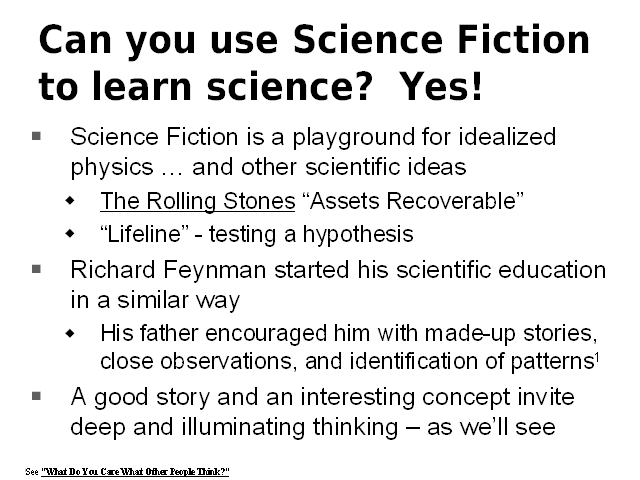
NOTES
It can be difficult for children to understand some basic physics concepts because life on earth is full of friction and gravity, but by using an SF story as a frame, students can develop a useful intuition about Newton’s laws, etc. in the friction-free, gravity-free environment (example: the scene in Heinlein’s Rolling Stones when the twins are pulling a load of freight with a rope (while in space)) and can also learn about scientific methods – like the method that the characters in Heinlein’s “Lifeline” come up with for testing Pinero’s lifespan-measuring device.
I’m reminded of how Richard Feynman was educated about science by his father – with made-up stories about the things they saw around their neighborhood, and careful observations about what they saw. You can read more in Feynman’s book “What Do You Care About What Other People Think?”, but don’t pick it up if you have a deadline coming up soon – because it’s hard to put down. In addition to being a good playground for simplified physics, a good story illustrating an interesting concept can inspire thinking that grows deeper and more illuminating with every new fact you learn – as you will see.
I should note that I’m not overly interested in finding errors in the stories I talk about – if it’s necessary to remark on an error to make my point, I will, but I’m more interested in the way that stories covey scientific principles, which is generally fairly insensitive to numerical errors.
